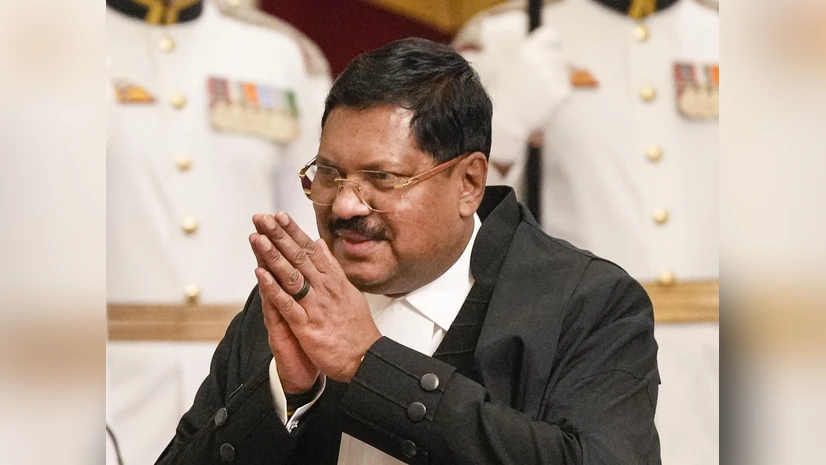It was October 6. In the hush of Court Hall 1, the Chief Justice was hearing arguments when a sudden disruption rippled through the benches. Rakesh Kishore, a 71-year-old advocate, abruptly removed his shoe and lunged forward, apparently with intent to throw it at Chief Justice B.R. Gavai. The security staff moved swiftly; the projectile missed the bench, and the hearing resumed within moments.
Eyewitnesses say Kishore, shouting “Sanatan ka apmaan nahi sahenge” (We will not tolerate disrespect to Sanatan Dharma), was restrained before the shoe could land. The Chief Justice, reportedly calm, instructed the court to press on. The incident left the court’s aura of solemnity jolted, raising questions about courtroom safety, rising tensions in faith-based jurisprudence, and the limits of protest inside India’s highest forum.
FCRF Launches CCLP Program to Train India’s Next Generation of Cyber Law Practitioners
The Campaign for Contempt: AG’s Consent and the Bar’s Push
Under the Contempt of Courts Act, 1971, when an act of contempt occurs outside the court, a court may only proceed if the Attorney General grants consent. On October 16, that consent was delivered. AG R. Venkataramani, in a letter addressed to the Supreme Court Bar Association, concluded that Kishore’s conduct was within the purview of Section 2(c) of the Act, deeming it “scandalous” and injurious to public confidence in the institution.
At a bench of Justices Surya Kant and Joymalya Bagchi, Solicitor General Tushar Mehta and SCBA President Vikas Singh formally informed the court of the sanction, requesting a listing of the criminal contempt petition immediately. While Singh urged swift action—some sought a “John Doe” order to curb social media glorification—the Court resisted urgency. A remark floated by the bench: let it “die a natural death,” rather than fan the flames of online discourse.
The bench, in cautious tones, acknowledged the CJI’s restraint after the event.
“Hon’ble CJI has been extremely magnanimous … that shows the institution is not affected by these kinds of incidents,” remarked Justice Kant.
From Words to Action: Bar Council, License Suspension and the Backdrop
Before the AG’s letter, developments had already rippled across legal corridors. The Bar Council of India (BCI) suspended Kishore’s license, barring him from appearing in any court or tribunal and initiating disciplinary proceedings.
Kishore has asserted that he acted not from whim but hurt—citing being “offended” by comments made by Justice Gavai in a prior case related to the restoration of a Lord Vishnu idol at the Khajuraho temple. In that hearing, Gavai had remarked that the litigant should “go and ask the deity” for relief, a comment that drew sharp backlash in religious and media circles.
Kishore has claimed no regret or repentance. He has asserted that he acted under “divine instruction,” rejecting calls for apology. Public statements suggest he intends to challenge the suspension and the contempt proceedings.
Meanwhile, the Supreme Court itself sounded warnings about social media’s role in amplifying the incident. The Court cautioned that the fundamental right to expression was not absolute and cannot erode institutional dignity. Unregulated online commentary, in the Court’s framing, risks transforming a single act into endless spectacle.
Institutional Test: Judicature, Decorum, and Digital Rage
The courtroom drama is now poised for a larger test. On one end, the judiciary must weigh enforcement of contempt law to protect the dignity of courts. On the other, the bench must navigate the public fury and polarized sentiment unleashed online. The decision to proceed—or let the matter fade—will reverberate beyond any one advocate.
Should the contempt matter be listed? Should social media speech be curtailed? If the Court acts too aggressively, critics may claim suppression; too lax, and the institution may seem hollow. The AG’s consent has cleared one procedural hurdle; the next is for the Supreme Court to decide whether the judiciary asserts its boundaries or lets the incident recede into memory.


